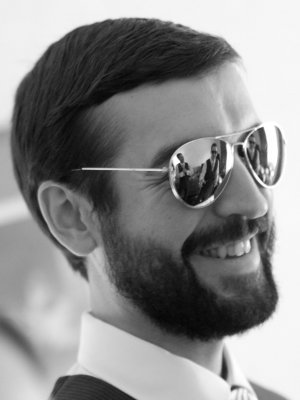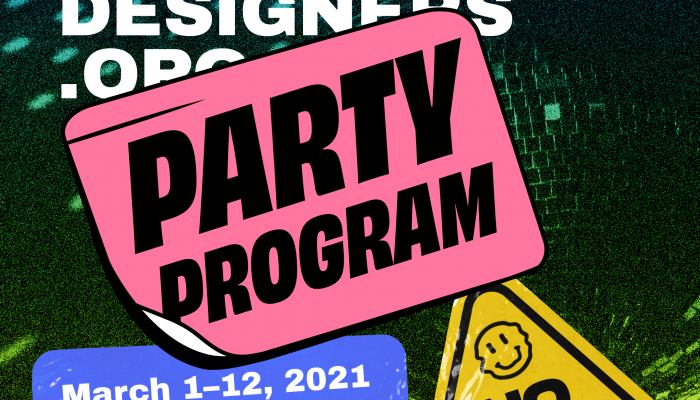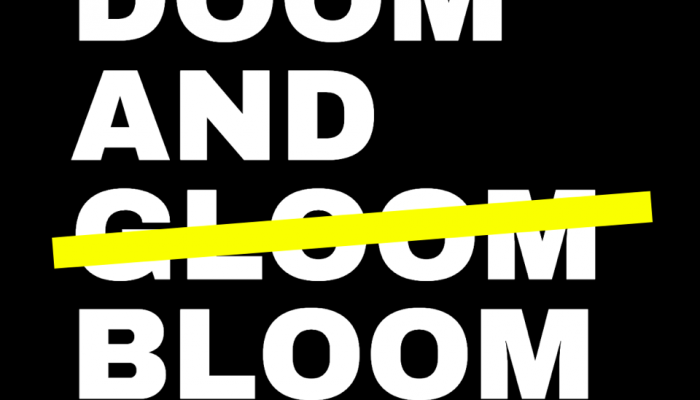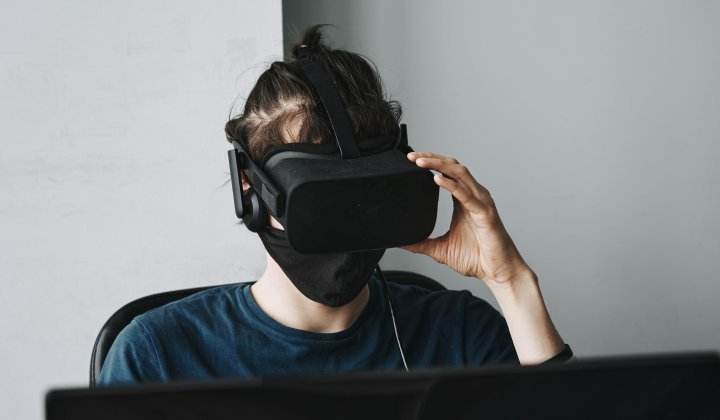Jess Jardim-Wedepohl is a designer at Snapplify and a Climatebase and Terra.do fellow. She first found herself becoming interested in climate change when she decided to become a vegetarian for ethical reasons, and later a vegan. As she figured out her new diet, doing lots of reading and watching videos online, she stumbled across a YouTuber, Shelbizleee, with a Bachelor's degree in Environmental Science and a passion for sustainability, who introduced her to the concept of a 'climatarian diet'.
“I remember being very anxious about it for a while because I realised that the only way to have no impact on the planet is to not exist,” she recalls. She started to explore the idea of moving her career to focus on climate action. “I discovered Climatebase, which is the largest platform for climate jobs in the world.”
While she didn’t have much success looking for a climate job, as most were US-based, she applied for a Climatebase fellowship and was accepted. “It’s basically an eight-week crash course in every sector touching climate, from transportation to agriculture to energy.”
Jardim-Wedepohl found the experience not only interesting, but reassuring as she discovered people around the world with an interest in climate action, engaging in it in every different field. She then applied for the climate designers fellowship through Terra.do, an organisation aiming to get 100 million people to work directly on climate in this decade.
While the Climatebase fellowship had seemed geared towards technology and Silicon Valley start-ups, the climate designers course was smaller, but approached climate from a broader perspective, looking at wide-reaching issues, such as decolonising climate activism.
There was also a project component and Jardim-Wedepohl partnered with a designer in India, Valiullah Hashmi, and one in Ireland, Kimberly Goes, to develop a concept for a board game that would help designers to think differently about what she calls “big scary issues”.
She says the 12-week course helped her to realise that not everyone has the luxury of a complete career change, but she could use her existing skills to play a part in climate action – her work in education (and specifically in access to education) is a climate solution in itself.
What is a climate designer?
Marc O’Brien describes himself as “a climate designer, strategist, educator, and human”. The co-founder of Climate Designers says his work has always fallen under the umbrella of social impact. In 2016, he co-founded a creative studio that helped climate organisations with branding, messaging, marketing, innovation and strategy work. It functioned as a collective, pulling in skills from various independent creatives per project, as required.
As interest in climate action increased within the design community, O’Brien approached Sarah Harrison, and, after brainstorming how to get more designers involved in climate action, the two quickly set up a landing page for what would become Climate Designers.
“The call to action was to sign up when we launch,” O’Brien says. “We didn't really even know what launching meant, but we got a tremendous number of subscribers.”
In 2019, as wildfires in Australia and the Amazon elevated the conversation around climate change to new levels globally, and activists such as Greta Thunberg grew in prominence, Climate Designers launched. Today, there are more than 3 300 members and 18 chapters globally. The first African chapter, based in Nairobi, is being onboarded (at time of writing).
“We have two podcasts – one more general and one dedicated to design education, because we really want to bring climate education into the design classroom,” says O’Brien. In 2022, Climate Designers won the Future Voice Awards from the Interaction Awards, an initiative of the Interaction Design Association (IxDA).
In 2023, the organisation (currently entirely volunteer-driven) is looking to transition to a sustainable cooperative model. The by-laws are already written and the change is in the works.
Climate Designers has also turned its existing content from a two-week summit in 2021 and training material developed for a San Francisco-based creative studio into a course for Terra.do, and has successfully put two cohorts through this fellowship, with a third planned for the first part of 2023.
“We're coming at it from a very interesting perspective where we want to bring more awareness around things like colonialism and consumerism, capitalism, individual action versus collective action, climate justice narratives, messaging, and behaviour change,” says O’Brien. “We're not teaching any one specific vertical when it comes to design specialties; we're coming at it from a more holistic standpoint, so that any designer (whether you're in fashion, graphic, UX, UI) can still apply this stuff to your work.”
Why design?
O’Brien and Harrison believe that designers can have an enormous effect in terms of climate action. “Look around you. Everything around you is designed; has been touched by a designer,” says O’Brien. “From the clothes that you wear, to the objects on your desk, the devices that you interact with, the things that you read and see out in the world, the things that you watch. We recognise that design shapes culture and that every designer has the responsibility and opportunity to either positively or negatively impact that.”
Shifting the climate narrative
While climate activism has historically focused on telling people what to stop doing (whether it’s cutting down on plastic waste or minimising reliance on fossil fuels), O’Brien believes we need new narratives.
“We need to go from, ‘Hey, the world's on fire; we're all screwed’ to something more positive and hopeful. Because the doom and gloom narrative doesn't get anyone out of bed. It doesn't excite anyone to do the work. It doesn't motivate people,” he says.
Instead, he uses an approach he calls 'doom and bloom', which acknowledges the dire state of affairs and how it will worsen if nothing is done, but then focuses on the opportunity to be part of addressing this. “I see designers more as opportunity-seekers as opposed to problem-solvers,” he says.
Rather than focusing on selling a particular behaviour or idea (which can get mired down by politics), he suggests imagining what a better future would look like. “Who doesn’t want a future where there’s enough food and clean air?” he asks. “We’ve got to start there. That’s how we get more people onboard, get companies involved.”
Getting practical
Jardim-Wedepohl readily admits that the actions of a single individual can’t make a measurable difference and might not always even be practical (for example, as a woman in Johannesburg, it wouldn’t be safe or viable for her to get rid of her car and cycle everywhere). However, the old adage is true: actions speak louder than words. She says it’s been shown that credibility increases when it comes to having climate conversations when people see individuals taking action in their own lives. Individual and systemic change are both needed.
“Atmospheric scientist Katharine Hayhoe, who works for The Nature Conservancy in the USA, always talks about how the biggest individual action you can take on climate is to have conversations with people in your life about it,” says Jardim-Wedepohl. “That’s hard to do. But one of the things that I’ve found really helpful in terms of initiating private conversations with people is to approach it through the lens of something that they already care about.”
She adds that it’s important to do this in an empathetic way, and to admit one’s own shortcomings.
Cynically, this approach also works for business, which has traditionally cared most about profit. “I like to say that you can’t do business on a dead planet,” says O’Brien. “Nobody is going to be concerned with buying your product when they’re worried about a wildfire approaching their home. I truly believe that companies who aren’t taking climate action are going to become irrelevant. Every single company, every single job needs to be a climate company or a climate job, no matter whether it started out that way or not.”
Within educational institutions, he believes we should be looking at climate change the same way we should look at ethics – as something that underpins everything that is taught, rather than an add-on or elective course here and there.
“We need to ask tough questions about existing protocol, existing methodologies and processes and frameworks that might need to be re-evaluated in today's world,” he says.
“Companies and business schools should bring in experts to educate management and to start to think about the impact beyond what people do day-to-day within an organisation. At the same time, we need to acknowledge that this is all new to all of us. As human beings, we’ve never experienced anything like this as a species. There is no guidebook. We also need to learn how to be okay saying ‘we don't know’ and to be okay with that. We need to learn how to experiment and really try things and be okay if they don't work – not in a Silicon Valley approach of ‘move fast and break things’, but where we take lessons, learn and share that knowledge. This needs to be a collaborative effort.”
Helpful resources
- Climate Designers: Aimed at anyone working in or interested in design, Climate Designers is a hub of knowledge and skills and a professional network for designers to take climate action.
- Project Drawdown: A resource for climate solutions that aims to “help the world reach ‘drawdown’ – the point in the future when levels of greenhouse gases in the atmosphere stop climbing and start to steadily decline, thereby stopping catastrophic climate change – as quickly, safely, and equitably as possible”.
- Terra.do: Offering a range of climate education initiatives, Terra.do caters for individuals, organisations, investors and professionals working in specific fields.
- Women+ in Climate Tech: Through its Mentoring the Future programme, Women+ in Climate Tech aims to “spark the interest and confidence in women pursuing careers in climate technology”. Applications open for the next intake in February 2023.
- South Africa's Survival Guide to Climate Change: This book by Sipho Kings and Sarah Wild explores “what climate change is likely to mean for us as South Africans, how we can prepare for it, and how we can – in our everyday lives – help to mitigate the impacts it will have.” Published by Pan MacMillan South Africa and available from various book retailers.










